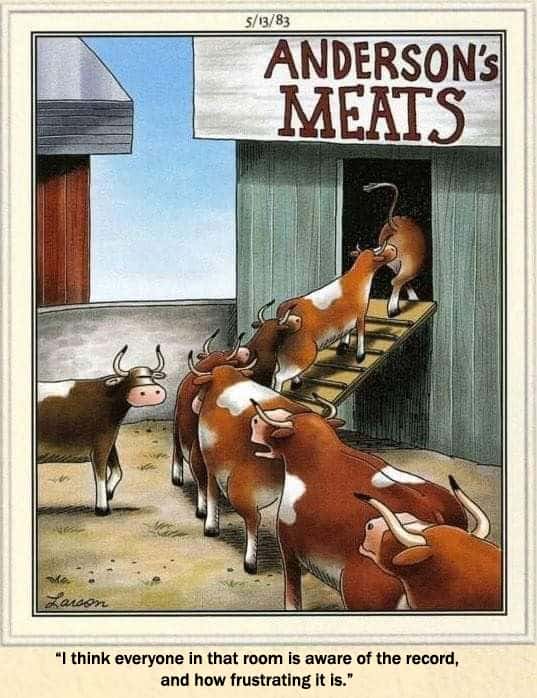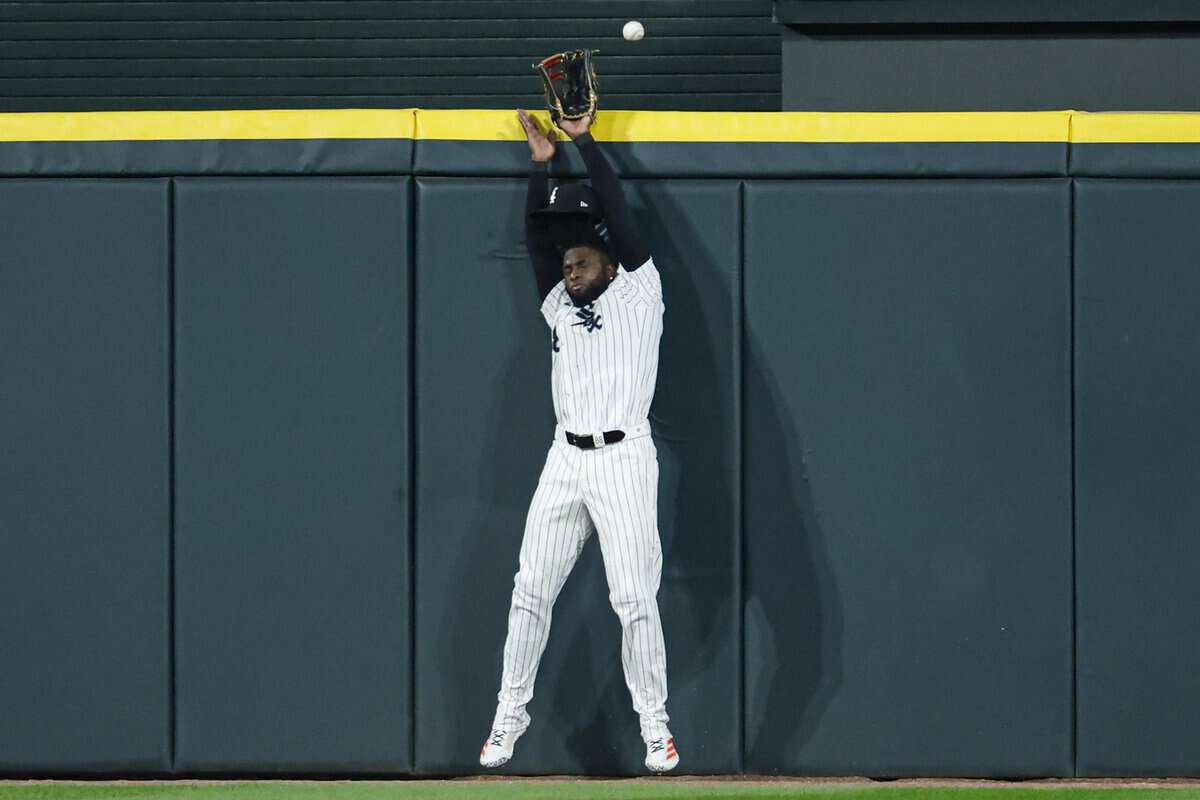Andrew Benintendi likened it to "beating a dead horse," but the White Sox's postgame reaction after their 100th loss of the season on Sunday -- in just 131 games -- reminded me more of a slaughterhouse. They're still living, but only for the benefit of others, whenever they're scheduled to meet their grotesque, mundane, inevitable fate.
To confirm the validity of this metaphor, I pasted a few White Sox clubhouse quotes into an old Far Side cartoon:



There it is. That's the one.
The only teams to lose 100 games faster than the 2024 White Sox played before the United States entered the Great War. The 1916 Athletics were the most recent, going 29-100-1 en route to a 36-117 season. They had played in the World Series two years earlier, but financial pressures and the upstart Federal League reduced their roster to a Stuffy, a Nap, a Whitey, a Bullet Joe, a Jing, a Weldon, and a Socks. The other was the 1899 Cleveland Spiders, who finished 20-134 because in part because they played 112 games on the road, and in part because they transferred all their good players to the St. Louis Browns, who had the same owner.
The 2024 White Sox were not pressed into disintegration by a renegade league, or harvested for parts for Jerry Reinsdorf's better MLB team. They're spectacularly bad on their own merits, while being utterly devoid of charming names. The best they can offer is the mild amusement of having consecutive hitters named "Andrew."
When following them every day, it's easy to lose track of how far under water they lie. They could win the remaining 31 games on the schedule and finish tied for the fifth-worst record in White Sox history (Reinsdorf's 2018 White Sox). With one more loss, they'll enter a tie for third with Reinsdorf's 2023 White Sox and the 1948 White Sox, which Reinsdorf managed to not be responsible for. In two more losses, they'll tie the 1932 team for second.
After that, it's all history. They'll have to go 25-6 to avoid setting the record for the most losses in White Sox history, and that kind of finish would warrant a Grady Sizemore statue on the concourse. Otherwise, they're now an 11-20 stretch from tying the 1962 Mets for the most losses in the modern era, and the White Sox are playing at a 7-24 pace.
It feels like somebody should pay, which is a problem when the three most visible people at the start of the collapse have already suffered the consequences. With Rick Hahn, Kenny Williams and Pedro Grifol all already shown the door, the White Sox have already used up their supply of cathartic firings in the last two Augusts.
Chris Getz has opened his career in a nadir, which he's trying to spin as the kind of failure needed to transform the way the White Sox do things. He's not necessarily wrong, because the Tigers lost 119 games in Dave Dombrowski's second season, before engineering a turnaround openly admired by the Detroit-area native. The difference is that Dombrowski came to Detroit with a World Series ring. Also, he was backed by an owner who wanted to spend what it took. Reinsdorf isn't going to do the same with the White Sox, and whether Getz even knows where to begin remains an open question.
It's hard to buy into the idea of Getz overhauling the organization when he's whiffed on smaller changes, and failed to clear even lower bars. His premise of a roster with a higher baseball IQ went by the boards after a 3-22 start underscored by sloppy defense, and his major deadline acquisition is a bat-first player hitting .097/.208/.161, who might be pushed off third base by a recalled Bryan Ramos. It reinforces the notion that two more experienced GMs worked Getz over in the three-team deal.
His best move was probably bringing Brian Bannister aboard, but the team's senior advisor to pitching is at a remove from what makes the day-to-day so woeful. He's said that spring training is his window for hands-on work. Once the regular season starts, he has to pick spots to drop in from his home in San Francisco in order to implement changes when and where he feels he can make impact.
In that sense, he's like a Pulitzer-grade magazine writer working for a community daily. He produces award-winning work by taking as much time as the story needs to unfold, but in the meantime, the newspaper is barely making it to press, and most of the space inside is devoted to corrections and retractions from what it managed to produce the day before.
As much as the White Sox could use a Bannister for hitting, they also need tangible, present help in all areas across all levels, because the current situation is in utter disarray. Getz's actual team has yet to win more games than the version I simulated where 2012 Chris Getz played every non-pitching position, including a -10 WAR performance at catcher because he allowed 200 stolen bases and 250 passed balls. At the time, the exercise seemed too silly to be useful, but it turned out to foreshadow a world where the White Sox shatter the concept of projections. They just chose a less farcical path, one where the roster just decomposed upon composition, and now it's one only a coroner could love.
On one hand, it's easy to imagine how bad it can get over the final 31 games because on a day to day basis, it'll look similar to the 131 already in the books. On the other, it's hard to imagine how bad it can get because that's five more weeks of having nothing to say. That's a preposterous amount of time remaining after a 100th loss, stretching beyond the bounds of awkward and into the realm of the inhumane.






